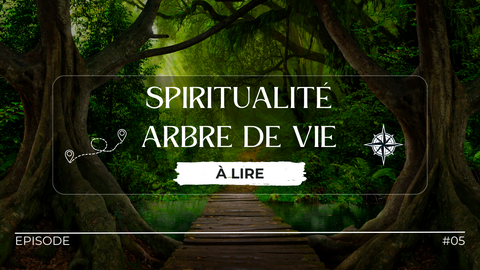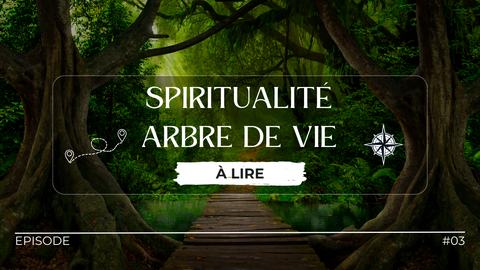
The Different Representations of the Tree of Life
of reading
Symbolism of Branches and Roots
The Tree of Life is a symbol loaded with meaning, where each part of the tree - the branches, roots, trunk and leaves - carries deep symbolism.
The branches of the Tree of Life extend toward the sky, symbolizing growth, expansion, and connection with the divine or spiritual. They also represent life itself, with its multiple possibilities for evolution and development. The branches are often associated with concepts such as knowledge, spirituality, creativity and ascension to higher planes of consciousness.
The roots of the Tree of Life, on the other hand, are deeply anchored in the earth, symbolizing grounding, stability and connection with mother earth or the earth's elements. They represent the foundation on which all life rests, as well as the ancestral wisdom passed down from generation to generation. Roots are often associated with concepts such as security, stability, origins and connection with ancestors or collective memory.
In many spiritual traditions, the Tree of Life is considered a symbol of the unity of all creation, representing the duality between heaven and earth, masculine and feminine, material and spiritual. The branches and roots of the tree are often interpreted as a representation of this duality, as well as the need to balance these opposing forces to achieve inner harmony and unity.
The Colors of the Tree of Life
The colors used to represent the Tree of Life can also have important symbolic meaning, influencing how the tree is perceived and interpreted.
Green is a color commonly associated with the Tree of Life, symbolizing growth, vitality, healing, harmony and nature. This color evokes a feeling of renewal and regeneration, representing the continuous cycle of life and death in nature.
Brown is often used to represent the roots of the Tree of Life, symbolizing stability, security, grounding and connection with the earth. This color evokes a sense of solid foundation, reminding individuals of the importance of remaining rooted in their values and origins.
Blue is sometimes used to represent the sky or the branches of the Tree of Life, symbolizing spirituality, tranquility, depth and elevation. This color evokes a feeling of inner calm and connection with higher planes of consciousness.
White is a color associated with purity, clarity, peace and light. When used to represent the Tree of Life, it can symbolize transcendence, purification and spiritual truth.
In summary, the different representations of the Tree of Life, as well as the colors used to represent it, offer a wealth of symbolic meanings that can inspire and guide individuals in their quest for personal and spiritual growth.
In addition
In this series of articles, we have explored in depth the symbolism of the Tree of Life, its importance in different cultures and spiritual traditions, and its practical application in personal and spiritual growth. We have looked at the different representations of the Tree of Life, from its meaning of branches and roots to the symbolism of the colors associated with it. We also explored its role in contemporary religions and its potential as a metaphor for spiritual evolution. Finally, we offered a practical guide to creating your own personal Tree of Life, as well as inspiring testimonials from people who have undertaken this creative journey.
We now invite our readers to join the conversation by sharing their own experiences and interpretations of the Tree of Life. What does the Tree of Life represent to you? How have you integrated it into your daily life or spiritual practice? We look forward to hearing your thoughts and continuing to explore the depths of this rich and fascinating symbol together.
















